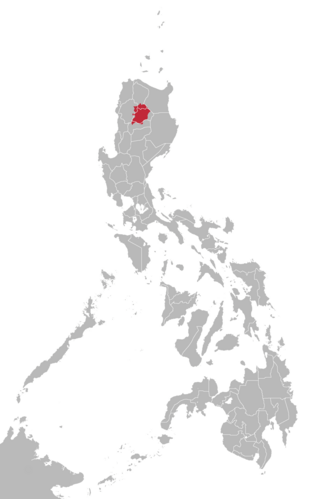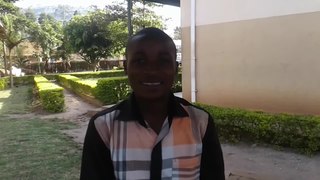Related Research Articles
Northeast Malakula, or Uripiv-Wala-Rano-Atchin, is a dialect chain spoken on the islands of Uripiv, Wala, Rano, and Atchin and on the mainland opposite to these islands. Uripiv-Wala-Rano-Atchin is spoken today by about 9,000 people. Literacy rate of its speakers in their own language is 10–30%.

Luri is a Southwestern Iranian language continuum spoken by the Lurs, an Iranian people native to Western Asia. The Luri dialects are descended from Middle Persian and are Central Luri, Bakhtiari, and Southern Luri. This language is spoken mainly by the Bakhtiari and Southern Lurs in Iran.
Tsat, also known as Utsat, Utset, Hainan Cham, or Huíhuī, is a tonal language spoken by 4,500 Utsul people in Yanglan (羊栏) and Huixin (回新) villages near Sanya, Hainan, China. Tsat is a member of the Malayo-Polynesian group within the Austronesian language family, and is one of the Chamic languages originating on the coast of present-day Vietnam.
Ajië is an Oceanic language spoken in New Caledonia. It has approximately 4,000 speakers.

Kalinga is a dialect continuum of Kalinga Province in the Philippines, spoken by the Kalinga people, alongside Ilocano. The Banao Itneg variety is not one of the neighboring Itneg languages.

Bontoc (Bontok) is the native language of the indigenous Bontoc people of the Mountain Province, in the northern part of the Philippines.

Kiga is a Great Lakes Bantu language of the Kiga people (Bakiga). Kiga is a similar and partially mutually intelligible with the Nkore language. It was first written in the second half of the 19th century. Kiga is largely spoken in the ancient Kigezi region which includes about 5 districts, namely Rubanda, Rukiga, Kabale, Kanungu and some parts of Rukungiri. As of 2021, Kiga is spoken natively by about 1.3 million people in Uganda.
Terêna or Etelena is spoken by 15,000 Brazilians. The language has a dictionary and written grammar. Many Terena people have low Portuguese proficiency. It is spoken in Mato Grosso do Sul. About 20% are literate in their language, 80% literate in Portuguese.
Bruu is a Mon–Khmer dialect continuum spoken by the Bru people of mainland Southeast Asia.
Kgalagadi is a Bantu language spoken in Botswana, along the South African border. It is spoken by about 40,000 people. In the language, it is known as Shekgalagari.
Jarawa is the most populous of the Bantu languages of northern Nigeria. It is a dialect cluster consisting of many varieties.
Karenni or Red Karen, known in Burmese as Kayah, is a Karen dialect continuum spoken by over half a million Kayah people in Burma.
Katu, or Low Katu, is a Katuic language of eastern Laos and central Vietnam.
Waiwai is a Cariban language of northern Brazil, with a couple hundred speakers across the border in southern Guyana and Suriname.

The Nyaduʼ language, Benyaduʼ, is a Dayak language of Borneo.
Kayan is a dialect cluster spoken by the Kayan people of Borneo. It is a cluster of closely related dialects with limited mutual intelligibility, and is itself part of the Kayan-Murik group of Austronesian languages.
Chru is a Chamic language of Vietnam spoken by the Churu people in southern Lâm Đồng Province and in Ninh Thuận Province.
Mengen and Poeng are rather divergent dialects of an Austronesian language of New Britain in Papua New Guinea.

The Iranun language, also known as Iranon or Illanun, is an Austronesian language belonging to the Danao languages spoken in the provinces of Maguindanao del Norte and other part of Lanao del Sur and Lanao del Norte, coastal municipalities of Zamboanga del Sur from Tukuran to Dumalinao and Cotabato in southern Philippines and the Malaysian state of Sabah. It is the second most spoken language in Maguindanao after the Maguindanao language.
Taliabo (Taliabu) is a Malayo-Polynesian language spoken on the island of the same name in the Moluccas of Indonesia.
References
- ↑ Cacgia at Ethnologue (18th ed., 2015) (subscription required)
Northern at Ethnologue (18th ed., 2015) (subscription required)
Southern at Ethnologue (18th ed., 2015) (subscription required) - ↑ Cobbey, Maxwell; Cobbey, Vurnell (1977). Suraq vungã sanãp Radlai / Nữ-vựng Rơglai / Northern Roglai vocabulary. Huntington Beach, CA: Summer Institute of Linguistics.
- ↑ Lee, Ernest Wilson (1966). Structure of Northern Roglai as a representative Chamic language. In Proto-Chamic Phonologic Word and Vocabulary: Bloomington: Indiana University. pp. 21–69.
- ↑ Brunelle, Marc; Brown, Jeanne; Thu Hà, Phạm Thị (2022). Northern Raglai voicing and its relation to Southern Raglai register: evidence for early stages of registrogenesis. In Phonetica 79, Vol 2. pp. 151–188.
{{cite book}}: CS1 maint: location (link) CS1 maint: location missing publisher (link)